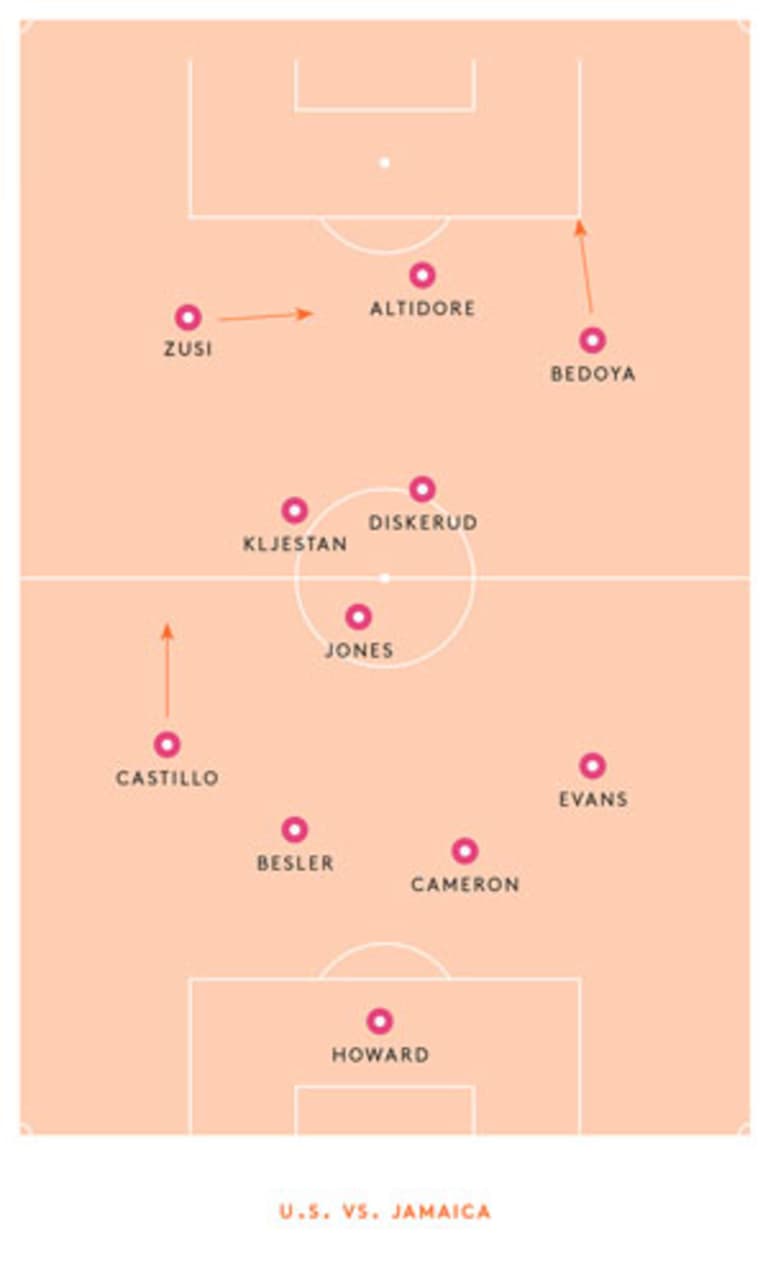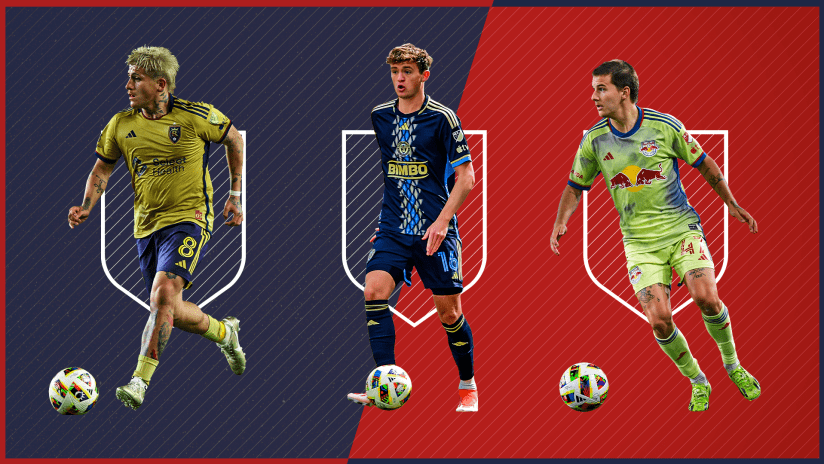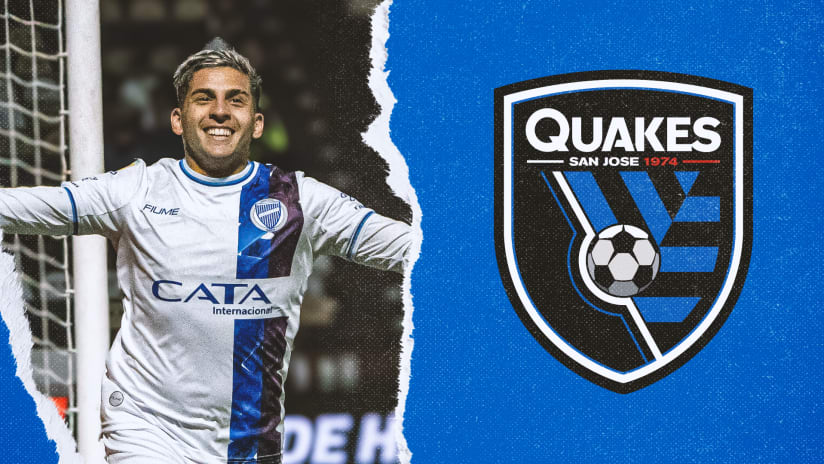LEVELING UP: Matthew Doyle charts the fascinating evolution of the U.S. men’s national team under Jurgen Klinsmann
Editors Note: This story will appear in the next issue of Howler Magazine, available for pre-order now. With the news Thursday that Jurgen Klinsmann signed a four-year extension to remain the head coach of the US national team, as well as adding the role of U.S. Soccer technical director to his duties, MLSsoccer.com thought it would make for interesting reading.

“[U.S. Soccer] has come a long way, but we have quite a way to go still to break into the top 10 in the world. We need to be realistic that we’re not there. Not yet.”
– Jurgen Klinsmann, August 1, 2011
Scan almost any interview Jurgen Klinsmann has given in the two-and-a-half years he’s been head coach of the US men’s national team and you’ll see the same pair of words: “another level.” Another level is where Klinsmann is trying to take his team, but it’s a nebulous, undefined target. Does he mean a specific stage in the World Cup, somewhere as late in the competition as the semifinals? Or is his goal simply to get out of the group, but to do it while playing better, more attractive soccer – to force an evolution in the American style from “try hard, run fast” to something approaching tika-taka?
Wherever that next level is, what kind of progress can we discern from the German’s first two-and-a-half years in charge?
How the US has changed Klinsmann
Klinsmann’s first 18 months on the job were colored by a cautious, overly defensive approach. He usually started three defensive-minded central midfielders, which made the team disjointed between defense and attack, unable to hold the ball or move forward with any sort of cohesion. Clint Dempsey or Landon Donovan had to drop deep to pick the ball up, then initiate sequences behind a largely static midfield.
As a result, the US scored one or zero goals in eight of the first nine games under Klinsmann, and only 14 in the first 17 matches. It was ugly.
The coach who’d talked so much about being proactive and going forward sent the US out with instructions to possess the ball but personnel only to defend. Maybe he was overcompensating in response to the freewheeling last 24 months of the Bob Bradley era, or maybe it was just that Klinsmann trusted the raft of European-blooded d-mids more than anyone else on the squad.

Whatever the reason, it didn’t work. The US bottomed out this past January with yet another one-goal effort, opening the Hexagonal with a 2-1 loss away to Honduras. It was a miserable game, largely emblematic of the failings of the early Klinsmann era. The usual three defensive midfielders in the center offered no off-the-ball penetration, leaving the attackers on their own against Honduras’s back four. Jermaine Jones was the primary creator from a deep-lying position, and, to be fair, he did create the lone US goal, but it was a bright moment in an otherwise sloppy day from him and everyone else. Geoff Cameron and Omar Gonzalez had never played together in central defense, and their lack of coordination required both fullbacks to cover deeper than they’d have liked, limiting the US’s width going forward and further isolating their teammates up the field.
These shortcomings could have been excused if the US had squeaked out a result. But after Dempsey scored, Honduras replied with two of their own. It was the fourth time in four road qualifiers that the US had blown a lead. A bad pattern had been established, and Klinsmann seemed unable to learn the lesson of these games.
Then, very abruptly, things changed. Klinsmann ditched the overly defensive posture in the following games, usually going with Jones and Michael Bradley, or a similarly balanced pairing, in central midfield. (Kyle Beckerman, Mix Diskerud, and Geoff Cameron all featured in 2013.) That was step one, a change in personnel. Step two was a tactical shift. Klinsmann finally seeming to concede that the US wasn’t about to pass its way into the goal the way a team like Spain could. He would need more variety in attack and his players would need to make better choices about when they applied pressure.
This could have felt like a surrender. Instead, it just seemed pragmatic, largely because it started to work almost immediately.
The US offense started to hum at the end of spring, first in a not-as-bad-as-it-seemed 4-2 loss to Belgium, then, days later, in a 4-3 win over Germany.
Both were friendlies played at something close to 80 percent speed. But they were followed by a pair of qualifying wins that truly sent the U.S on their way: 2-1 in Jamaica and 2-0 at home against Panama.

If there was one moment that showed how clearly Klinsmann had embraced the necessity of the American-style counterattack, it came against Panama. Jozy Altidore had failed to score from the run of play in Klinsmann’s first 22 months in charge, but his goal in the 36th minute was his third in three games and could have come from the first chapter of Bob Gansler’s playbook for the 1990 World Cup.
It was a blindingly fast open-field move initiated by Bradley, who streaked down the middle into Panama’s half, drawing three defenders before shuffling the ball wide left to Fabian Johnson. Johnson one-timed a cross to the back post for Altidore to tap into the goal. The goal was an avalanche - unstoppable. Counters like this were conspicuously absent in 2011 and 2012. In 2013, “try hard, run fast” was back – at least for snatches of games – and the fans celebrated by singing “We are going to Brazil.”
The open-field counter has been the USMNT’s bread and butter for 25 years, and Klinsmann finally decided to let his players eat.
How Klinsmann has changed the US
Under Bob Bradley, the US applied pressure selectively. Two forwards worked in concert to shape the opposition defense’s outlet passing, with the goal of cutting the field in half and funneling low-percentage passes up the flanks and forcing turnovers.
This is still part of the repertoire under Klinsmann, and it’s still the game plan with which the US are most comfortable.
But it’s Plan B. Plan A calls for more consistent pressure. The object is to win the ball back as high up the pitch as possible.

It’s a work in progress. The wide players now usually push much higher. This didn’t happen under Bradley, for whom Landon Donovan and Clint Dempsey were integral to the midfield structure, staying deep both to conserve energy as well as to prevent the US from being overwhelmed defensively. Meanwhile, one forward drops deeper and ballhawks by the opposing d-mid.
In other words, Klinsmann’s shift has been less about formations and more about organizational philosophy and, most important, personnel.
Graham Zusi’s goal against Jamaica in October of 2013 in Kansas City illustrates the difference. The play started with one of those high-pressure turnovers and the US already had nine players in Jamaica’s half. When it ended, both wingers, a central midfielder, and a center forward were in the box.
Give credit to Klinsmann: That kind of commitment to an aggressive scheme is difficult to play against. Especially now that the US have become fairly proficient at converting those turnovers into goals, as well as occasionally dipping back into the archives for a classic counter.
Of course, there’s a difference between forcing Jamaica into bad turnovers in Kansas City and doing it against any of the teams in the US’s Group G at the World Cup next summer. If the US are to emerge from a group containing Ghana, Portugal, and Germany, the US will need something special.
That special something
Call it the “X factor” or a “difference maker” or a “magician” – it’s what Bradley didn’t have in 2010 and what Klinsmann will need in order to get to “another level” in 2014.
Donovan is the best playmaker/chance creator the US have ever fielded, and will be for the fourth straight World Cup if he’s healthy. But Donovan operates within the framework of the team and the game, rarely deviating from the established patterns and rhythms.

Klinsmann needs someone who can subvert or break those rhythms entirely. Dempsey, for all his struggles with the Sounders, probably has the best chance of being that guy, even if he’s never really been comfortable in that role with the US. As Bruce Arena once said, Dempsey “tries s---,” and when Deuce is available, Klinsmann has more often than not run the attack through him in a way that Bradley never did.
Yet if Deuce can’t wear the hat, Diskerud may be able to – at least as a second-half sub.
Remember Donovan’s goal in the Hexagonal match at home against Mexico, the one that Diskerud created? Of course you do, because it’s not often that a US attacker decides to flip the ball up on his first touch, cut toward the touchline past three defenders, and lay a perfect pass across the goalmouth.
Diskerud did that, and he did it in perfect synchronicity with Dempsey’s run to the near post and Donovan’s run at the back. The US strung five quick passes together on that play, never leaving the final third. In an instant, all three attackers were in the right positions, and they put Mexico down 2-0. The most telling aspect of that goal was that it didn’t happen on the counter.
There haven’t been a lot of goals like it in the history of the US national team. It was skillful. It was proactive. It was on purpose.
In other words, it was on another level.














